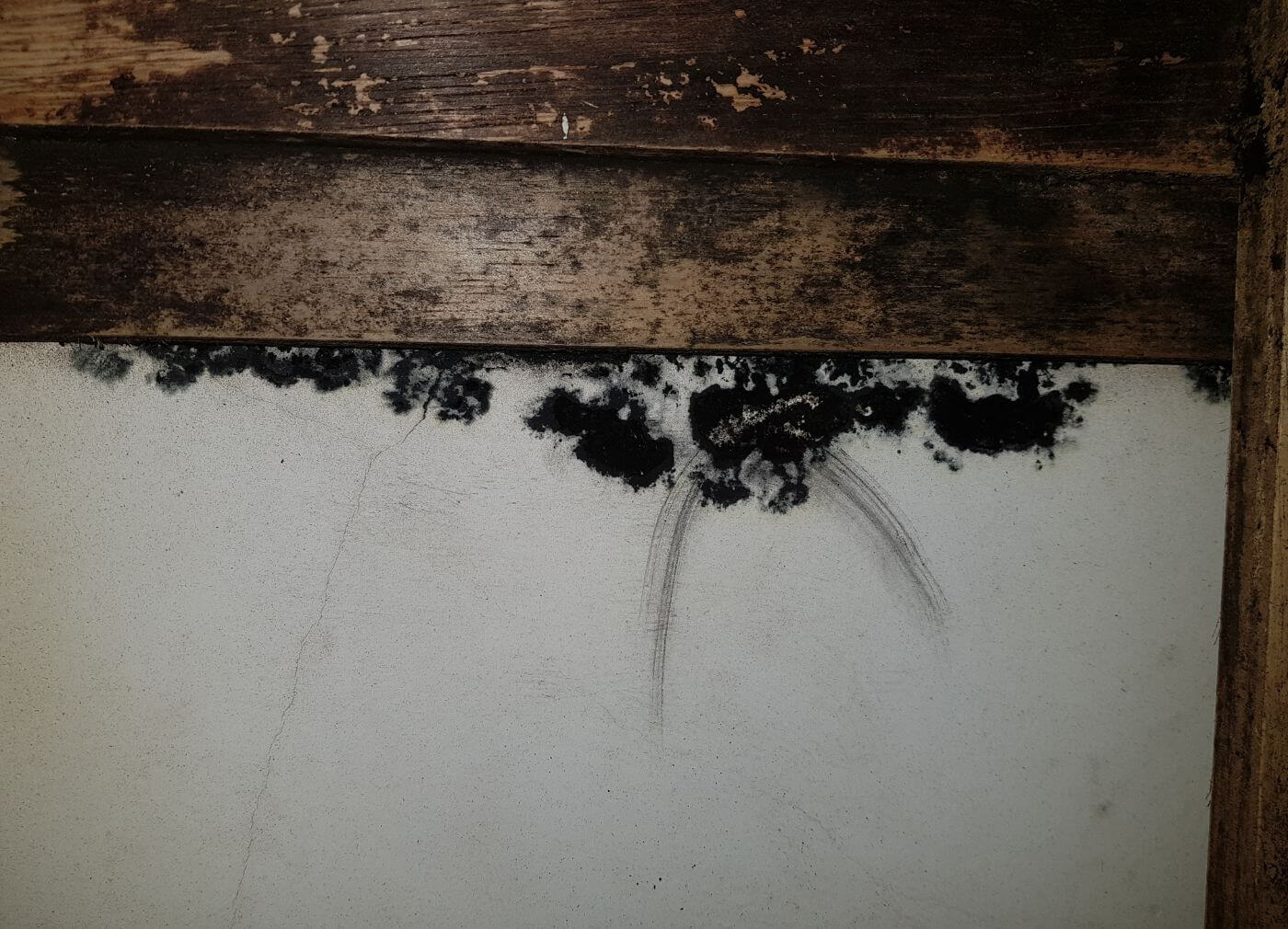Black mold, also known as Stachybotrys chartarum, is a type of fungus that can grow in damp and humid environments. It is often found in homes and buildings with water damage or high levels of moisture. While not all types of black mold are toxic, it is important to understand the potential dangers of this fungus and how to prevent its growth in your home.
In this article, we will discuss the dangers of black mold, how to identify it, and steps you can take to prevent its growth.
What is Black Mold?
Black mold is a type of fungus that belongs to the genus Stachybotrys. It is typically black or dark green in color and has a slimy texture. It thrives in damp and humid environments, making it a common problem in areas with water damage or high levels of moisture.
Black mold can grow on a variety of surfaces, including drywall, wood, and carpet. It is often found in areas such as bathrooms, basements, and crawl spaces. It can also grow on food, causing it to spoil and become unsafe to eat.
Is Black Mold Toxic?
Not all types of black mold are toxic, but some can produce mycotoxins that can be harmful to humans and animals. These mycotoxins can cause a range of health issues, including respiratory problems, skin irritation, and even neurological symptoms.
The most common type of black mold found in homes is Stachybotrys chartarum, which is known to produce mycotoxins. However, not all strains of this mold produce mycotoxins, and the amount of mycotoxins produced can vary depending on the environment.
How to Identify Black Mold
Black mold can be difficult to identify, as it can look similar to other types of mold. However, there are a few key characteristics that can help you determine if you have black mold in your home.
- Color: As the name suggests, black mold is typically black or dark green in color. However, it can also appear as a dark gray or brown.
- Texture: Black mold has a slimy texture, unlike other types of mold that may appear fuzzy or powdery.
- Smell: Black mold has a distinct musty odor that is often described as earthy or damp.
- Location: Black mold is commonly found in areas with high levels of moisture, such as bathrooms, basements, and crawl spaces.
If you suspect that you have black mold in your home, it is important to have it professionally tested to confirm its presence and determine the best course of action.
Common Types of Mold and Where They Grow
Molds are a type of fungus that can grow indoors and outdoors, often thriving in damp and humid environments. There are various types of mold, each with its own characteristics and potential health effects. Here are some common types:
1. Green Mold (Cladosporium): This type of mold is often found on fabrics, carpets, and upholstered furniture. It can also grow on wood and other organic materials. Cladosporium is usually green, brown, or black in color.
2. Blue Mold (Penicillium): Penicillium mold is known for its characteristic blue or green spores. It can grow on food, such as fruits, bread, and cheese, as well as on building materials like insulation and wallpaper.
3. Aspergillus: Aspergillus is a common indoor mold that can appear in various colors, including green, white, yellow, and black. It can be found on dust, paper products, and building materials. Some species of Aspergillus can produce mycotoxins, which may pose health risks.
4. Black Mold (Stachybotrys chartarum): Black mold, often referred to as toxic mold, can grow on materials with high cellulose content, such as drywall, wood, and paper. It appears black or dark green and can produce mycotoxins that may cause respiratory issues and other health problems in susceptible individuals.
5. Outdoor Mold (Alternaria): Alternaria is commonly found outdoors but can also grow indoors on damp surfaces. It has a velvety texture and can be black, gray, or olive green. Alternaria can trigger allergic reactions and asthma symptoms in sensitive individuals.
6. Pink Mold (Fusarium): Fusarium mold can grow in water-damaged buildings and on food. It typically appears pink, white, or reddish in color. Certain species of Fusarium can produce mycotoxins that may be harmful to human health.
7. Gray Mold (Mucor): Mucor mold is often found in damp or flood-damaged areas. It can grow on organic materials like wood and paper and appears white or gray. Mucor may cause respiratory issues and infections in susceptible individuals.
8. White Mold (Rhizopus): Rhizopus is another mold commonly found in soil and decaying organic matter. It can grow on food, such as bread and fruits, and appears fuzzy and white or gray. Rhizopus may cause food spoilage and can sometimes lead to infections in humans.
These are just a few examples of the many types of mold that exist. It’s essential to address mold growth promptly to prevent property damage and minimize health risks. If you suspect mold growth in your home or workplace, it’s recommended to consult with a professional for proper identification and remediation.
The Dangers of Black Mold
Black mold can pose a range of health risks, especially for those with weakened immune systems or pre-existing respiratory conditions. Here are some of the potential dangers of black mold:
Cancer Risk
Recent studies have indicated a potential link between exposure to black mold and an increased risk of certain types of cancer. Mycotoxins produced by black mold have been found to possess carcinogenic properties, capable of causing mutations in cells and disrupting normal cellular processes. While further research is needed to fully understand the extent of this risk, the presence of black mold in indoor environments should be taken seriously, especially considering its potential long-term health consequences.
Respiratory Problems
Exposure to black mold can cause respiratory problems, such as coughing, wheezing, and difficulty breathing. This is because the mycotoxins produced by black mold can irritate the lungs and airways, leading to inflammation and other respiratory issues.
Allergic Reactions
Some people may have an allergic reaction to black mold, which can cause symptoms such as sneezing, runny nose, and itchy eyes. These symptoms can be particularly severe for those with allergies or asthma.
Skin Irritation
Direct contact with black mold can cause skin irritation, including rashes, hives, and itchiness. This is because the mycotoxins produced by black mold can irritate the skin and cause an allergic reaction.
Neurological Symptoms
In rare cases, exposure to black mold can cause neurological symptoms, such as headaches, dizziness, and difficulty concentrating. This is because the mycotoxins produced by black mold can affect the central nervous system.
How to Prevent Black Mold Growth
The best way to protect yourself and your family from the dangers of toxic black mold is to prevent its growth in your home. Here are some steps you can take to prevent black mold growth:
Fix Water Leaks
Water leaks are a common cause of black mold growth. If you notice any leaks in your home, it is important to fix them as soon as possible to prevent moisture buildup and mold growth.
Control Humidity Levels
Black mold thrives in damp and humid environments, so it is important to control the humidity levels in your home. You can do this by using a dehumidifier, especially in areas like basements and bathrooms.
Proper Ventilation
Proper ventilation is key to preventing black mold growth. Make sure your home has adequate ventilation in areas like bathrooms, kitchens, and laundry rooms. You can also use exhaust fans to help remove excess moisture from these areas.
Clean and Dry Wet Areas
If you have a water spill or leak, it is important to clean and dry the affected area as soon as possible. This will help prevent mold growth and reduce the risk of water damage.
Use Mold-Resistant Products
When renovating or building a new home, consider using mold-resistant products, such as drywall and paint. These products are designed to resist mold growth and can help prevent black mold from taking hold in your home.
What to Do if You Find Black Mold in Your Home
If you find black mold in your home, it is important to take immediate action to remove it. Here are some steps you can take:
Hire a Professional
Black mold can be difficult to remove, and attempting to do it yourself can be dangerous. It is best to hire a professional mold remediation company to safely and effectively remove the mold from your home.
Wear Protective Gear
If you do decide to remove the mold yourself, it is important to wear protective gear, such as gloves, goggles, and a mask, to avoid direct contact with the mold and its spores.
Clean and Disinfect
To remove black mold, you will need to clean and disinfect the affected area. Use a mixture of water and detergent to scrub the mold off of hard surfaces, and then use a disinfectant to kill any remaining spores.
Dispose of Contaminated Materials
If any materials in your home, such as drywall or carpet, have been contaminated with black mold, they will need to be disposed of properly. This is another reason why it is best to hire a professional mold remediation company, as they will know how to safely dispose of contaminated materials.
Final Thoughts
Black mold can pose a range of health risks and should be taken seriously. By understanding the dangers of black mold and taking steps to prevent its growth, you can protect yourself and your family from potential health issues. If you do find black mold in your home, it is important to take immediate action to remove it and prevent it from coming back.




